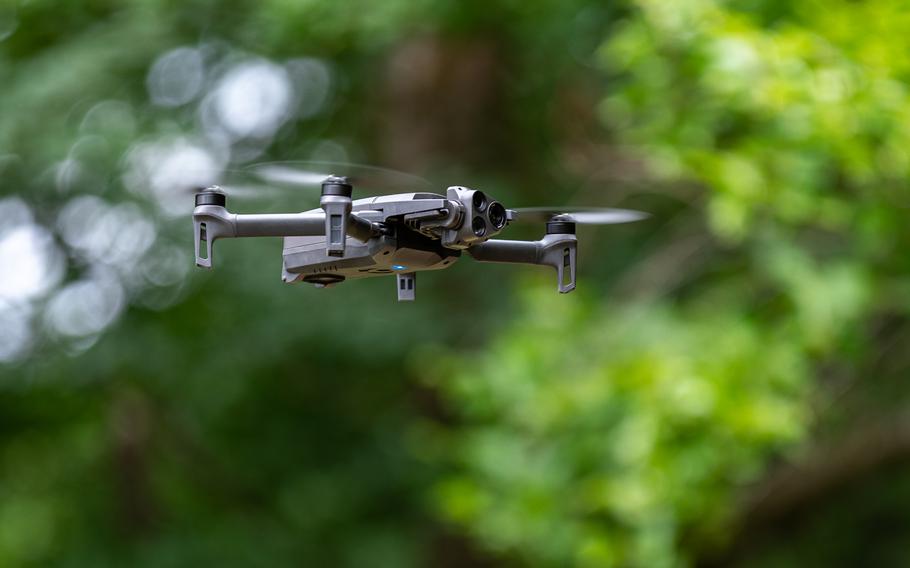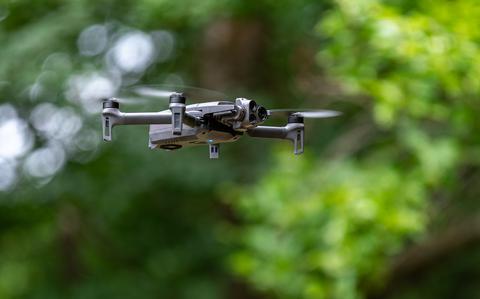
A reconnaissance drone flies in Hohenfels, Germany, May 16, 2025. More than 40 incursions involving unmanned aircraft have been reported recently in central and northern Europe on the heels of a breach of Poland’s airspace by a Russian drone swarm, according to the Center for European Policy Analysis. (Jacob Dunlap/U.S. Army)
Central and northern European countries have been subjected to more than 40 recent drone incursions, which a new report mapping them says are primarily directed at NATO’s staunchest opponents of Russia.
Military bases and civilian infrastructure such as airports are among the locations where the sightings have occurred, the Center for European Policy Analysis said in the report published Monday.
“Countries foremost in supporting Ukraine, sharply increasing defense spending, and demanding robust NATO action against the Kremlin” are bearing the brunt of the campaign, according to the report. It specified Poland, Germany, Denmark and Norway.
Among the most disruptive intrusions in the past few days occurred in the southern German city of Munich, where the international airport was forced to temporarily shut down twice during a 24-hour span.
Additional countries that have been targeted include Belgium, Estonia, Latvia, Lithuania, Finland, Iceland and Sweden, the report added.
The list did not include southern European countries, such as Romania, that also have dealt with drone incursions.
“Not all these incidents can be traced back to Russia (and some initially appear innocuous), but many appear considered and malign,” the report said. “The incursions are now occurring almost daily and include swarms of drones flying in formation.”
Although the list is not all-encompassing, it underscores the challenges Europe faces as it tries to counter a growing threat from drones while also anticipating the possibility of a drawdown of the U.S. military presence on the Continent.
While it’s still unclear who was behind the Munich incidents, German Chancellor Friedrich Merz on Sunday pointed the finger at the Kremlin.
“We suspect that a significant portion of it is probably controlled from Russia,” Merz said on German television.
Drones have also forced brief airport closures in Norway and Denmark in recent days. The sightings follow a pattern of disrupting airports, approaching military facilities and critical infrastructure, CEPA said.
Some security analysts say Moscow is using drone incursions to test alliance response times and gauge NATO’s unity in dealing with drone threats.
On Sept. 9-10, numerous Russian drones were shot down in Poland, marking the first time in history that alliance aircraft were called on to shoot down a threat inside the bloc.
However, the NATO response doesn’t appear to have dissuaded Russia from other unauthorized drone flights. For example, days after the Poland incident, Russian drones were spotted in Romania.
The situation ratcheted up further on Sept. 19, when three Russian fighter planes flew into Estonian airspace, where they lingered for more than 10 minutes.
Some allies have called for NATO to take a tougher position and shoot down Russian planes if they cross into alliance territory. But Secretary-General Mark Rutte has said such decisions will be made on a case-by-case basis.
